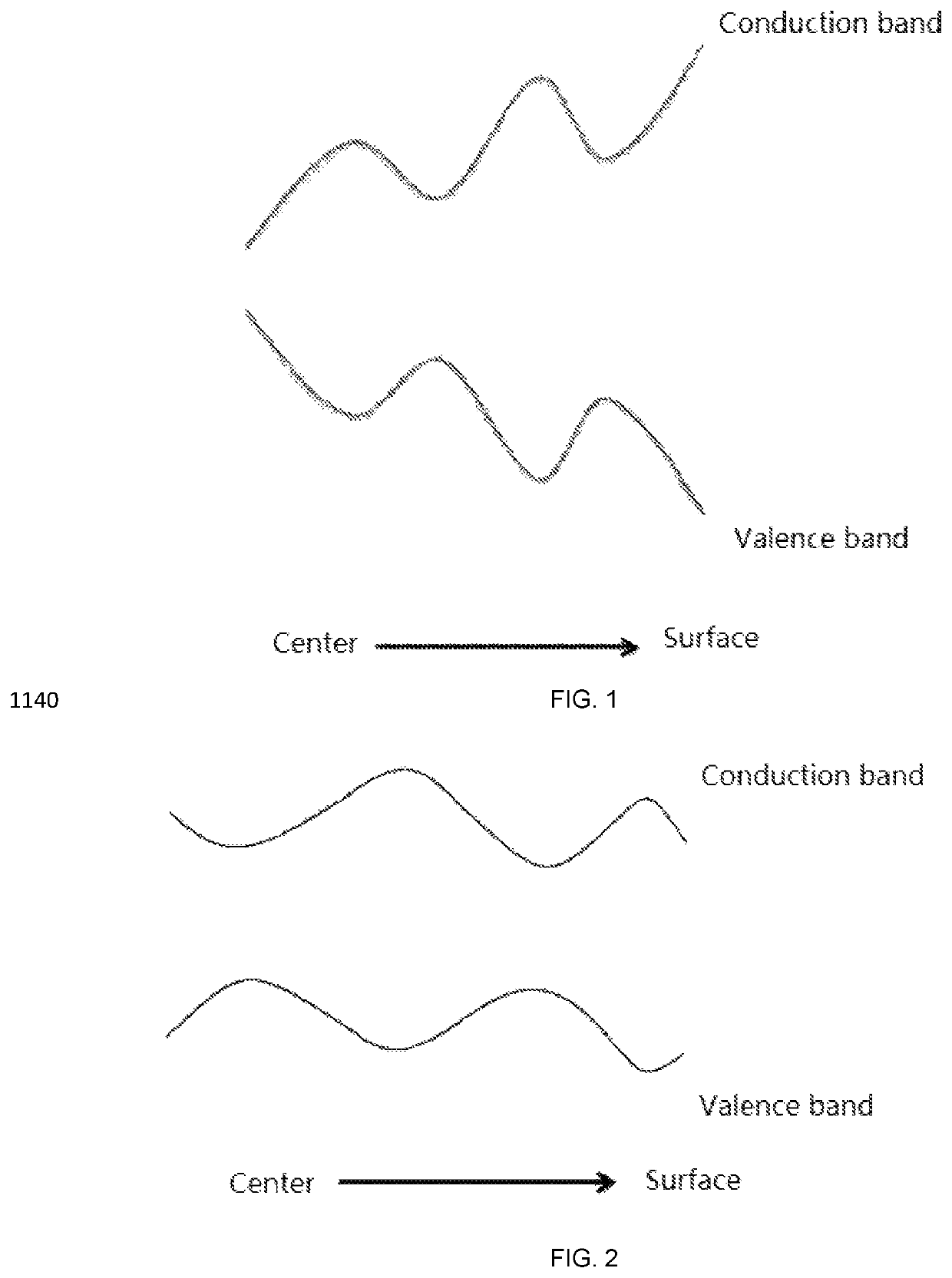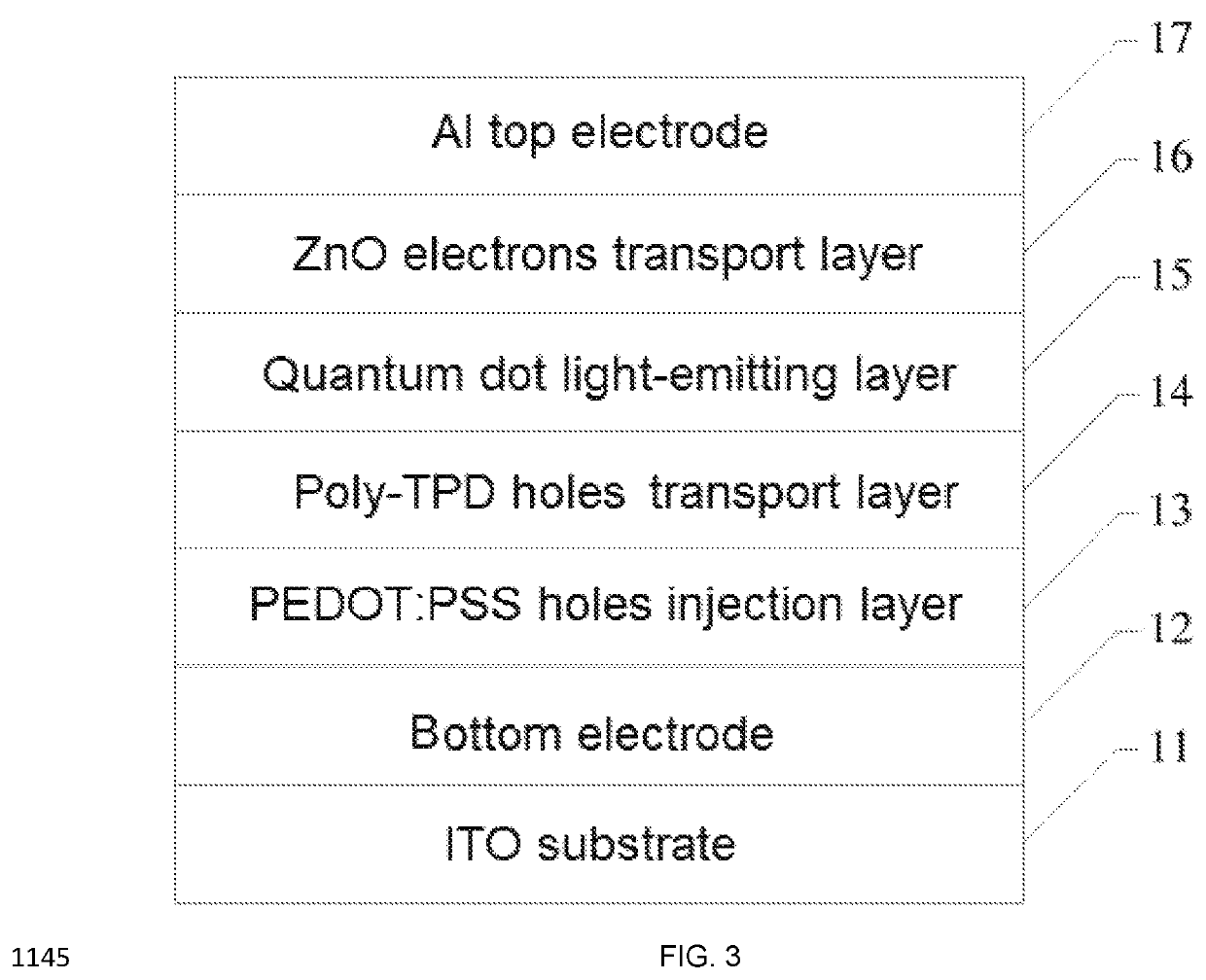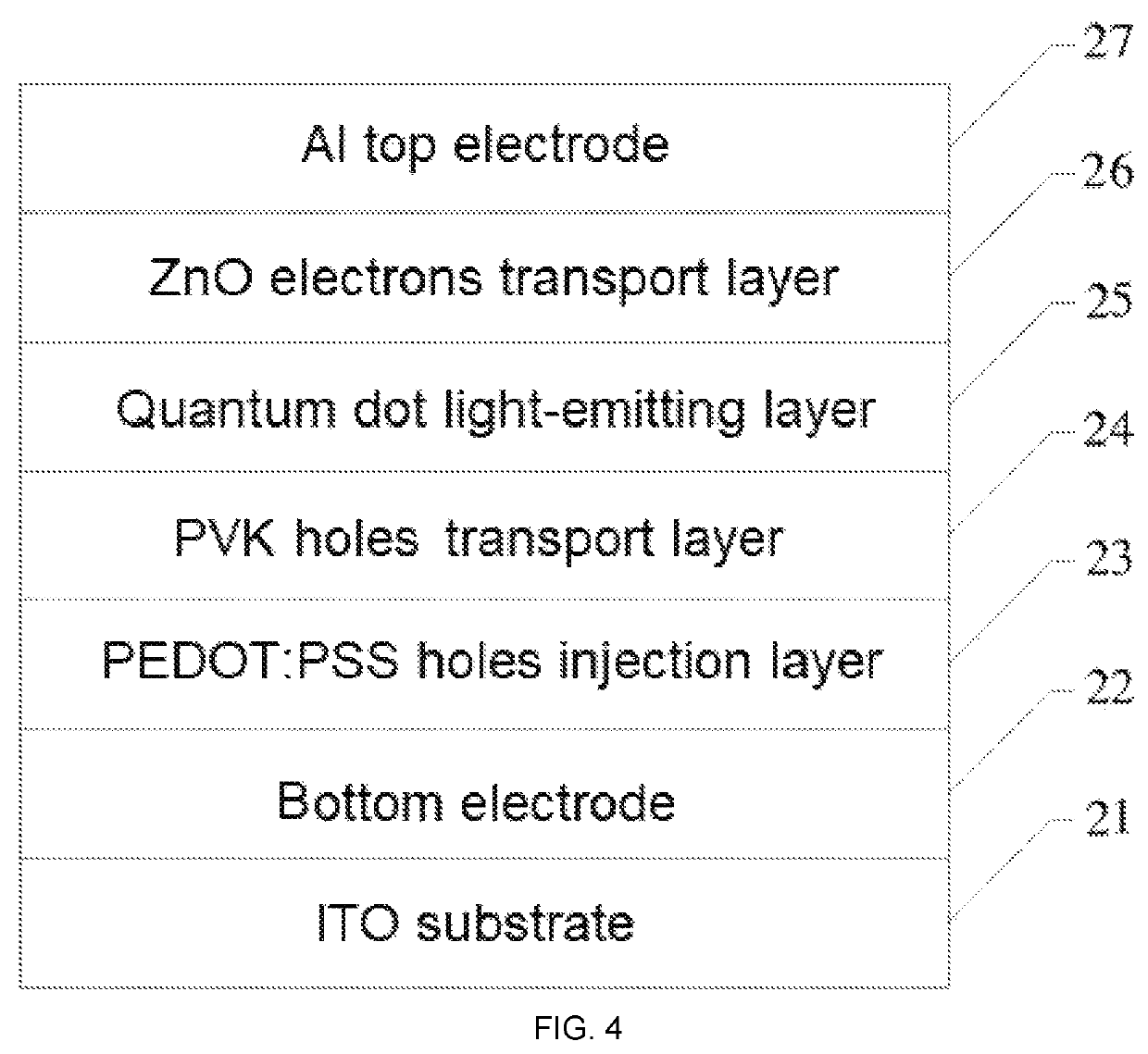Alloy nanomaterial, preparation method therefor, and semiconductor device
a nanomaterial and alloy technology, applied in the field of display material technology, can solve the problems of limiting the development and application of qd light-emitting display technologies, affecting the plurality of corresponding display technologies, and consuming a lot of research tim
- Summary
- Abstract
- Description
- Claims
- Application Information
AI Technical Summary
Benefits of technology
Problems solved by technology
Method used
Image
Examples
example 1
on of CdZnSeS / CdZnSeS QDs
[0101]First, a cationic cadmium precursor, a cation zinc precursor, an anionic selenium precursor, and an anionic sulfur precursor may be injected into a reaction system to form a CdyZn1-ySebS1-b film (where 0≤y≤1, 0≤b≤1); continuously injecting the cationic cadmium precursor, the cationic zinc precursor, the anionic selenium precursor, and the anionic sulfur precursor into the reaction system to form a CdzZn1-zSeCS1-c film on a surface of the CdyZn1-ySebS1-b film. (where 0≤z≤1, and z is not equal to y, 0≤c≤1); under a plurality of reaction conditions including a certain heating temperature and heating time, Cd cations and Zn cations exchanges happen in the inner and the outer nanocrystals (that is, the two films of compounds described above); since the migration distance of the cation is limited and the migration probability decreases as the migration distance increases, thus a gradient alloy composition distribution with Cd and Zn concentrations, that is, ...
example 2
on of CdZnS / CdZnS QDs
[0102]First, a cationic cadmium precursor, a cationic zinc precursor, and an anionic sulfur precursor may be injected into a reaction system to form a CdyZn1-yS film (where 0≤y≤1); continuously injecting the cationic cadmium precursor, the cationic zinc precursor and the S precursor into the reaction system to form a CdzZn1-zS film on a surface of the CdyZn1-yS film. (where 0≤z≤1, and z is not equal to y); under a plurality of reaction conditions including a certain heating temperature and heating time, Cd cations and Zn cations exchanges happen in the inner and the outer nanocrystals (that is, the two films of compounds described above); since the migration distance of the cation is limited and the migration probability decreases as the migration distance increases, thus a gradient alloy composition distribution with Cd and Zn concentrations, that is, a CdxZn1-xS, where 0≤x≤1, is formed at an interface between the CdyZn1-yS film and the CdzZn1-zS film.
example 3
on of CdZnSe / CdZnSe QDs
[0103]First, a cationic cadmium precursor, a cationic zinc precursor, and an anionic Se precursor may be injected into a reaction system to form a CdyZn1-ySe film (where 0≤y≤1); continuously injecting the cationic cadmium precursor, the cationic zinc precursor, and the anionic Se precursor into the reaction system to form a CdzZn1-zSe film on a surface of the CdyZn1-ySe film. (where 0≤z≤1, and z is not equal to y); under a plurality of reaction conditions including a certain heating temperature and heating time, exchanges between the Cd cations and the Zn cations happen in the inner and the outer nanocrystals; since the migration distance of the cation is limited and the migration probability decreases as the migration distance increases, thus a gradient alloy composition distribution with Cd and Zn concentrations, that is, a CdxZn1-xSe, where 0≤x≤1, is formed at the interface between the CdyZn1-ySe film and the CdzZn1-zSe film.
PUM
| Property | Measurement | Unit |
|---|---|---|
| light-emission peak wavelength | aaaaa | aaaaa |
| full width at half maximum | aaaaa | aaaaa |
| temperature | aaaaa | aaaaa |
Abstract
Description
Claims
Application Information
 Login to View More
Login to View More - R&D
- Intellectual Property
- Life Sciences
- Materials
- Tech Scout
- Unparalleled Data Quality
- Higher Quality Content
- 60% Fewer Hallucinations
Browse by: Latest US Patents, China's latest patents, Technical Efficacy Thesaurus, Application Domain, Technology Topic, Popular Technical Reports.
© 2025 PatSnap. All rights reserved.Legal|Privacy policy|Modern Slavery Act Transparency Statement|Sitemap|About US| Contact US: help@patsnap.com



